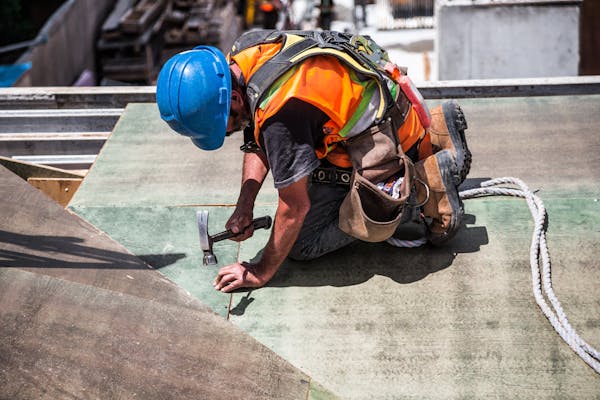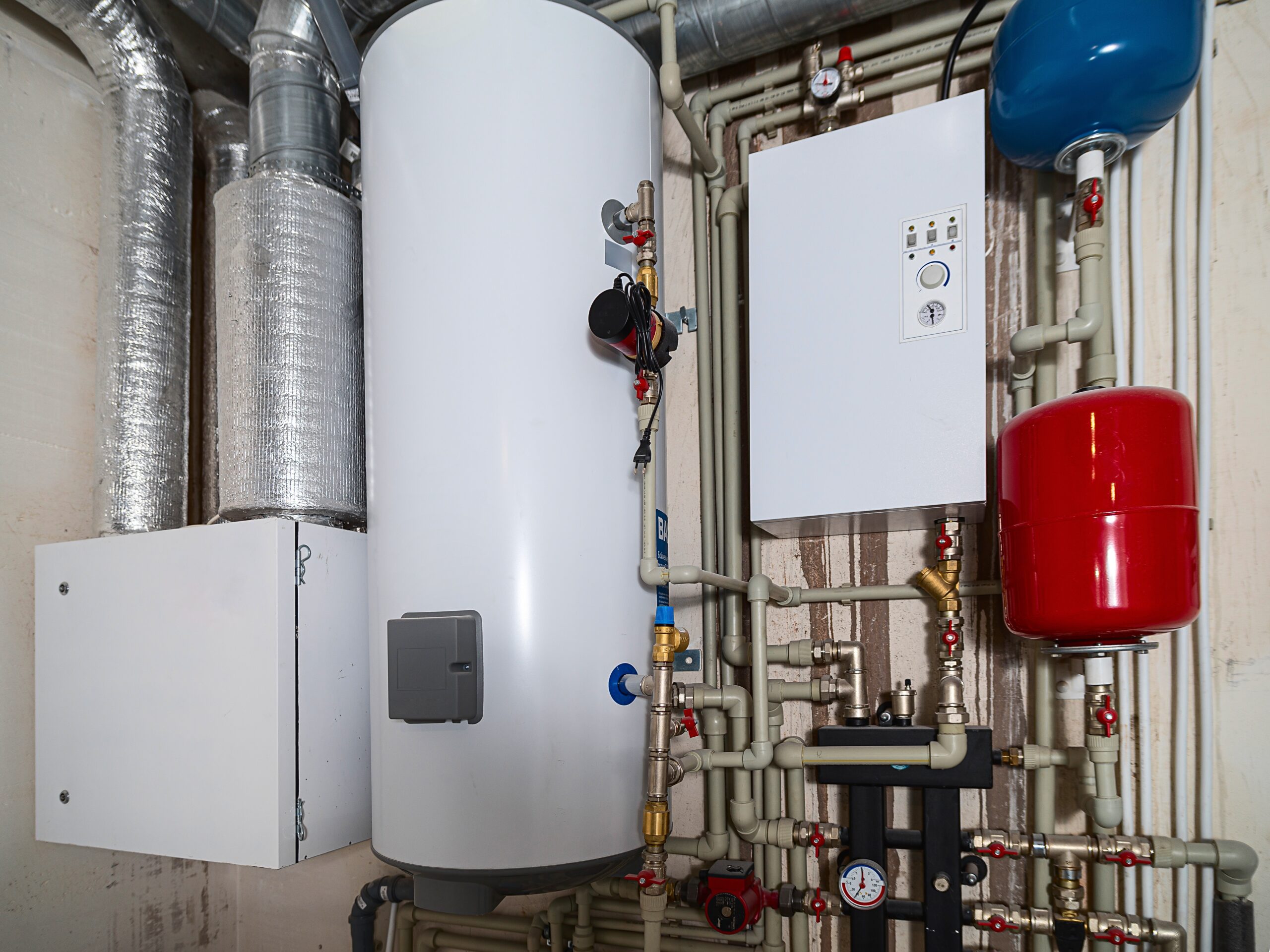SpaceX’s first crewed mission is headed back to Earth. Here’s every step that must go perfectly for 2 NASA astronauts to come home safely.

Two NASA astronauts are currently orbiting Earth in a SpaceX spaceship and about to embark on a fiery fall through the atmosphere, into the ocean.
Bob Behnken and Doug Hurley became the first people to fly SpaceX’s brand-new spaceship, the Crew Dragon, on May 30. It was the first crewed launch from American soil since July 2011 and the first-ever launch of a commercial spacecraft with humans inside. The ship docked to the International Space Station the next day, and Behnken and Hurley have since been conducting science experiments and spacewalks there.
But now comes the hard part: bringing them back to Earth.
Behnken and Hurley must hurtle back through the atmosphere — a voyage that will require the spacecraft to weather temperatures up to 3,500 degrees Fahrenheit. You can watch the process live here.
SpaceX CEO Elon Musk has said the fall to Earth is what worries him most about the Demo-2 mission.
Here’s how each step of the return trip must play out to bring the astronauts home safely.
The Demo-2 return began on Saturday, when Behnken and Hurley climbed back into the Crew Dragon capsule, which they’ve named Endeavour.

Screenshot/NASA TV
NASA and SpaceX had been watching the weather closely to make sure it would be safe for the capsule to splash down in at least two preselected sites. If winds get too strong or waves are too high, the spaceship has up to 60 hours in Earth’s orbit before it must land.
But as of 12:55 p.m. ET on Sunday, NASA reported calm weather and smooth seas.
“It looks like glass. It’s awesome,” one mission controller said on NASA’s live feed.
If the Crew Dragon safely brings the men back to Earth, the culmination of the mission will officially kick off a new era of commercial spaceflight.

NASA plans to use commercial providers like SpaceX to launch and bring home astronauts — not just on missions to the ISS, but soon to the moon and eventually to Mars.
“This is the next era in human spaceflight, where NASA gets to be the customer,” NASA Administrator Jim Bridenstine said during Sunday’s live feed of the astronauts’ return journey.
Behnken and Hurley have been in space since May 30, when a Falcon 9 rocket carried them into Earth’s orbit in the Crew Dragon spaceship.

The spaceship docked to the space station on May 31, and the astronauts then crawled through its hatch to join their colleagues.

The spaceship sat attached to the ISS for two months. Then on Saturday evening, Crew Dragon retracted the hooks that held it to the station’s dock.

Crew Dragon then gently fired its thrusters to propel itself away from the orbiting laboratory.

Once it was far enough from the ISS, the capsule fired more aggressively to put itself on the right path to its splashdown location off the Florida coast.
At 1:52 p.m. ET on Sunday, the spaceship will shed its tubelike trunk — a lower section outfitted with fuel tanks, solar panels, and other hardware, which the astronauts will no longer need.

The trunk should fall into Earth’s atmosphere and burn up.
This will expose the capsule’s heat shield. After another 40 minutes of maneuvering into position and pushing itself into Earth’s atmosphere, the ship will begin to fall.

The heat shield will deflect and absorb the energy of superheated plasma, enduring temperatures up to 3,500 degrees Fahrenheit. The shield should protect the hardware and astronauts as they plow through Earth’s atmosphere at 25 times the speed of sound.
Elon Musk has said this stage of the mission is the part he worries about most, partially because of the ship’s asymmetric design.

Photo by Yasin Ozturk/Anadolu Agency via Getty Images
The shape was necessary for the emergency-escape system, which can jettison the capsule away if a launching rocket fails in midair. Though Musk said the asymmetry was unlikely to cause a problem, he said he worried that it could complicate the plunge back to Earth.
“If you rotate too much, then you could potentially catch the plasma in the super Draco escape thruster pods,” Musk told Aviation Week’s Irene Klotz in May, a few days before the May launch. “We’ve looked at this six ways to Sunday, so it’s not that I think this will fail. It’s just that I worry a bit that it is asymmetric on the backshell.”
Minutes later, the capsule’s parachutes must deploy to slow the ship as it falls through thicker parts of the atmosphere.

NASA TV
The first chute should release at 18,000 feet as Crew Dragon rockets toward the ground at 350 mph. It should slow the capsule’s fall to about 119 mph by the time it reaches 6,000 feet, when more parachutes will deploy.
During a press briefing before the mission’s launch, Hans Koenigsmann, SpaceX’s vice president of mission assurance, was asked what kept him up at night in regard to the mission. He pointed to the parachutes, since their packing can’t be tested until they’re deployed.
If all goes well, the capsule should splash down in the Gulf of Mexico at 2:48 p.m. ET on Sunday. NASA is targeting a site off the coast of Pensacola, Florida.

Google Earth; NOAA; NASA; Business Insider
Its backup splashdown site is nearby, off the coast of Panama City. Both sites are well out of Hurricane Isaias’ way.
At that point, the astronauts will be nearly done with a mission that NASA estimated had a 1 in 276 chance of killing them.

Bill Ingalls/NASA/AP
They were well aware of those odds: “I think we’re really comfortable with it,” Behnken told Business Insider ahead of the launch.
After splashdown, Behnken and Hurley will wait inside the capsule for 30 minutes to an hour, depending on the weather and the state of the spacecraft, as recovery teams in boats approach.

The recovery teams will retrieve the astronauts and give them a preliminary medical checkout.

A helicopter will then carry Behnken and Hurley to shore. From there, they will take a plane to Houston.

From undock to splashdown, the return journey should take 19 hours and 18 minutes.

Behnken and Hurley are bringing a trophy back to Earth with them: the coveted prize in a nine-year game of capture the flag.

NASA TV
The American flag flew on the first space shuttle and has stayed on the International Space Station since the shuttles stopped launching in 2011, waiting for the first commercial-spaceship crew to claim it.
SpaceX and Boeing have both been developing astronaut-ready spaceships through a public-private partnership program that the Obama administration started. Musk’s company got to a crewed mission first.

SpaceX; NASA; Business Insider
That means Behnken and Hurley get to bring back the flag.
Musk and NASA officials have been anxiously waiting for the moment the astronauts return to Earth: “I’m not going to celebrate until Bob and Doug are home safely,” NASA Administrator Jim Bridenstine said after the Crew Dragon reached orbit on May 30.

Musk has said he feels responsible for the men’s lives while they’re in his company’s spaceship.
“I felt it most strongly when I saw their families just before coming here,” Musk told reporters ahead of the mission’s launch.

He paused for a few seconds and appeared to choke up before continuing: “I said, ‘We’ve done everything we can to make sure your dads come back OK.'”
If all goes well, NASA will use Crew Dragon to ferry astronauts to and from the ISS regularly — a capability that will free the US of its dependence on Russian Soyuz rockets.

After Demo-2, NASA has contracted six round trips on Crew Dragon. The first one is scheduled to launch in late September.
Read the original article on Business Insider







